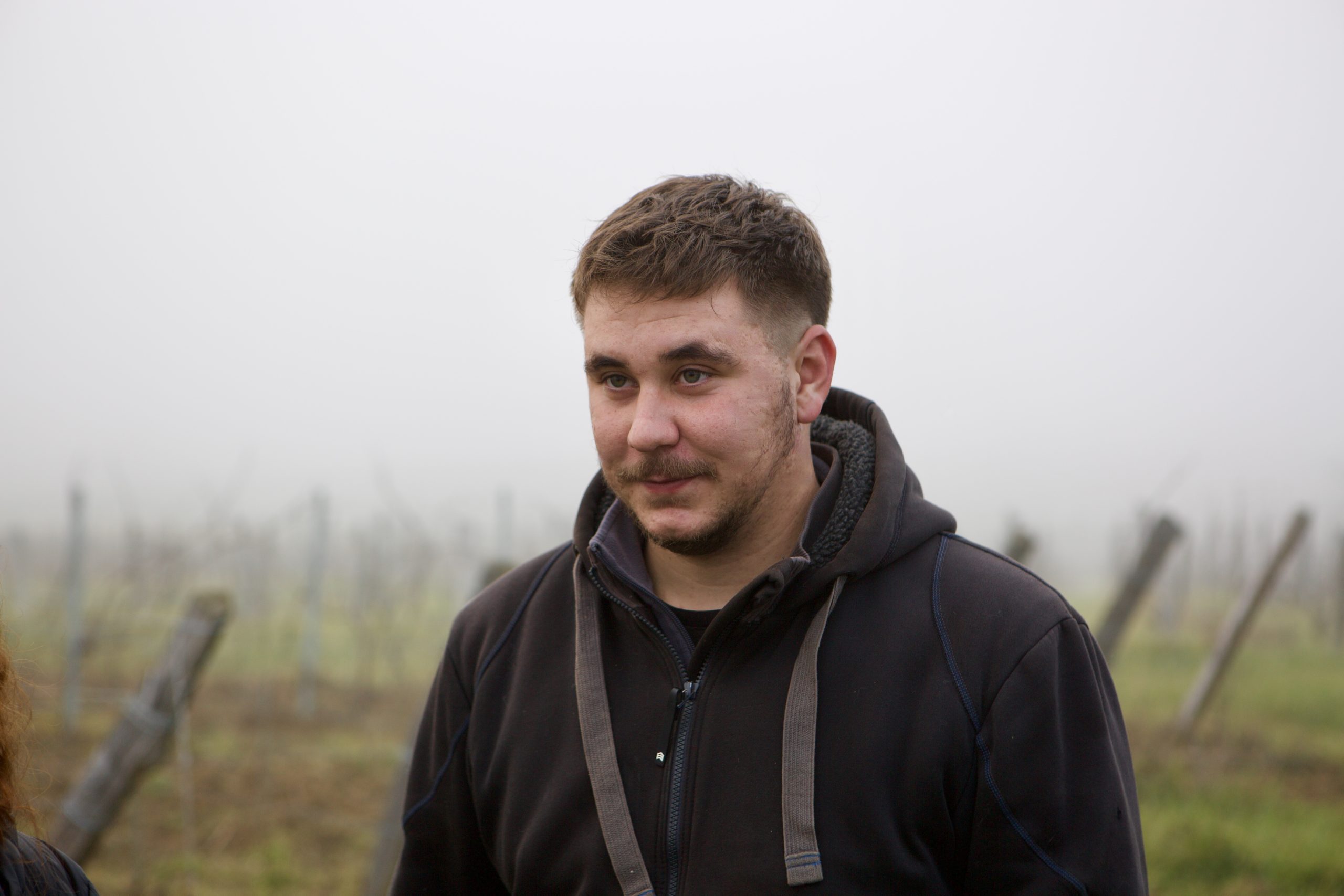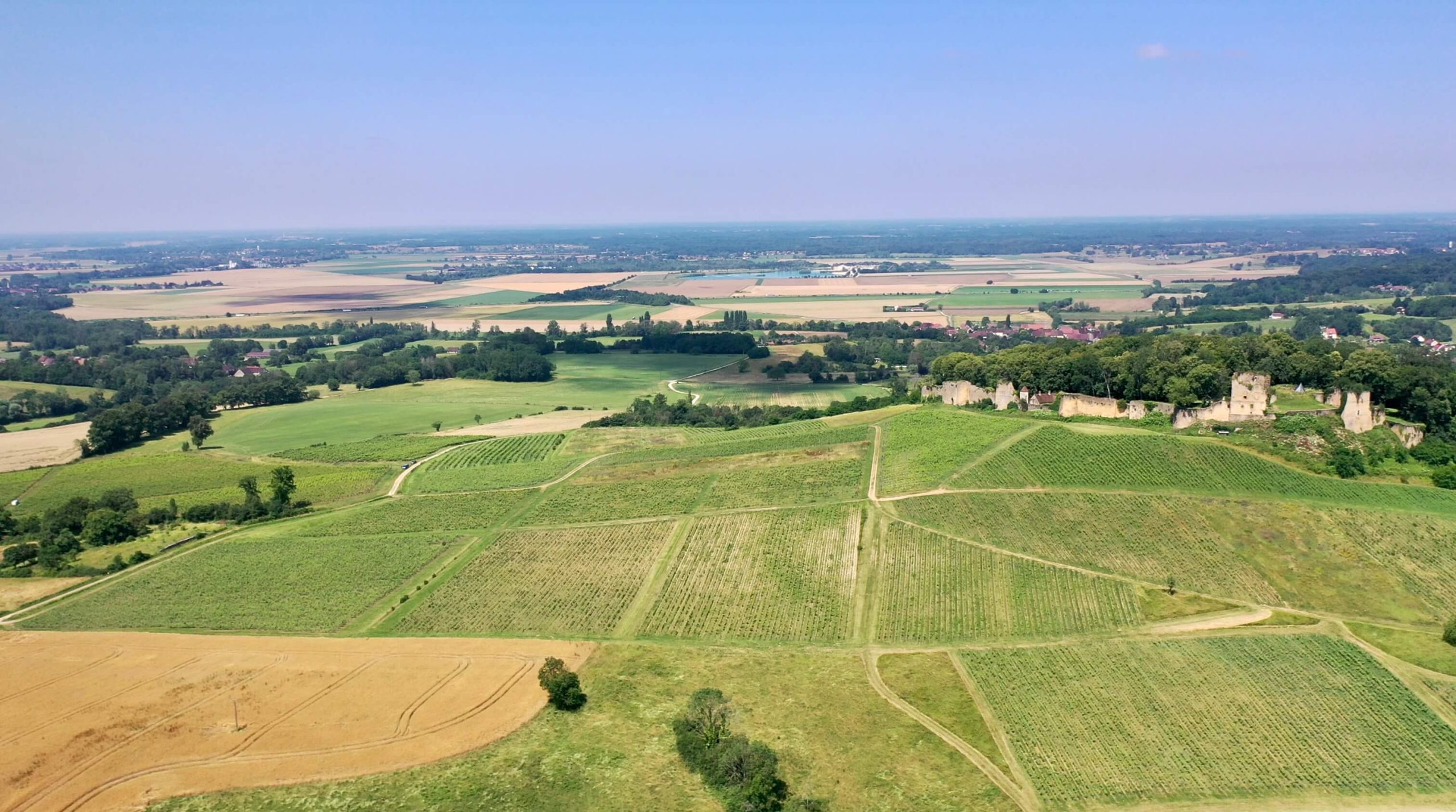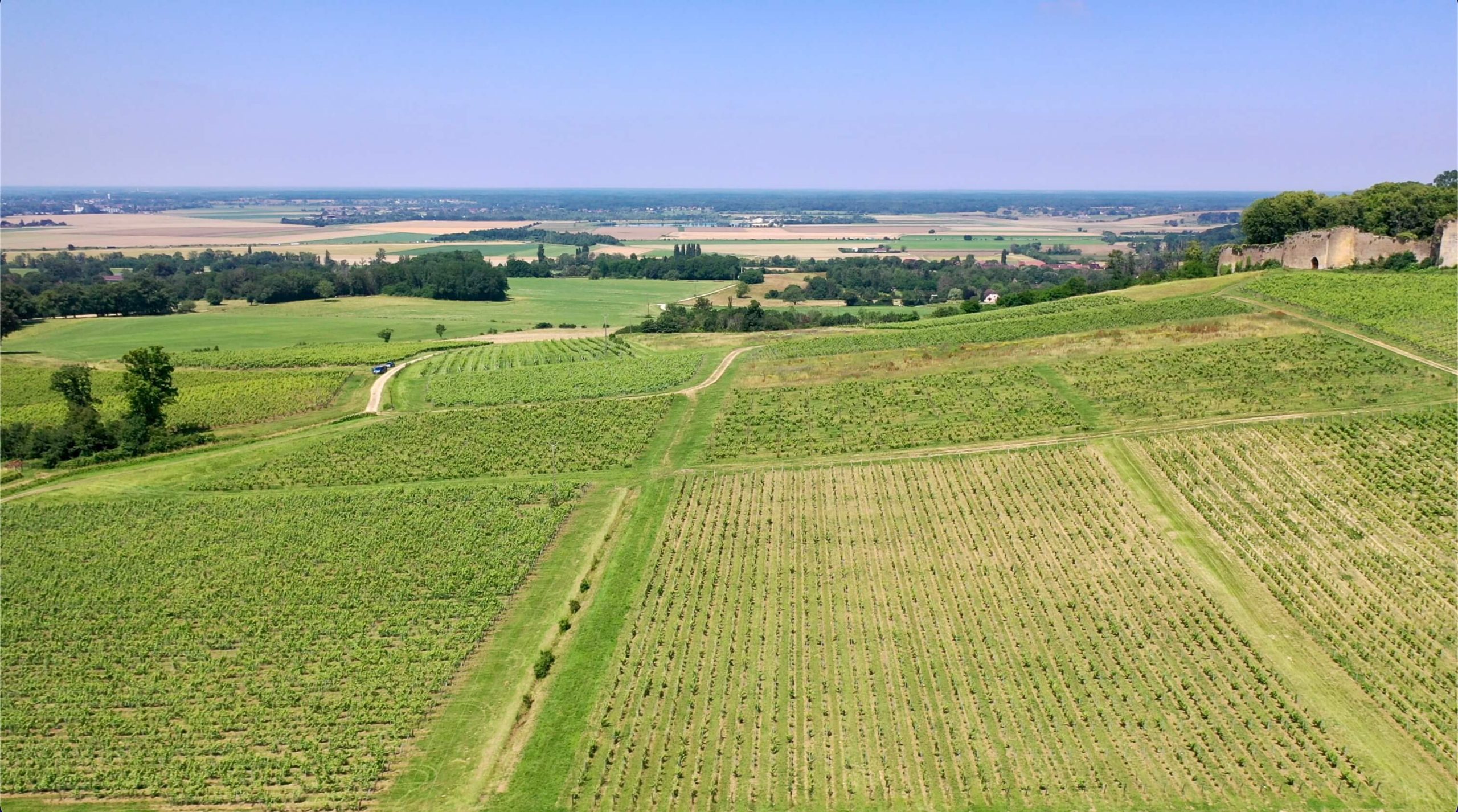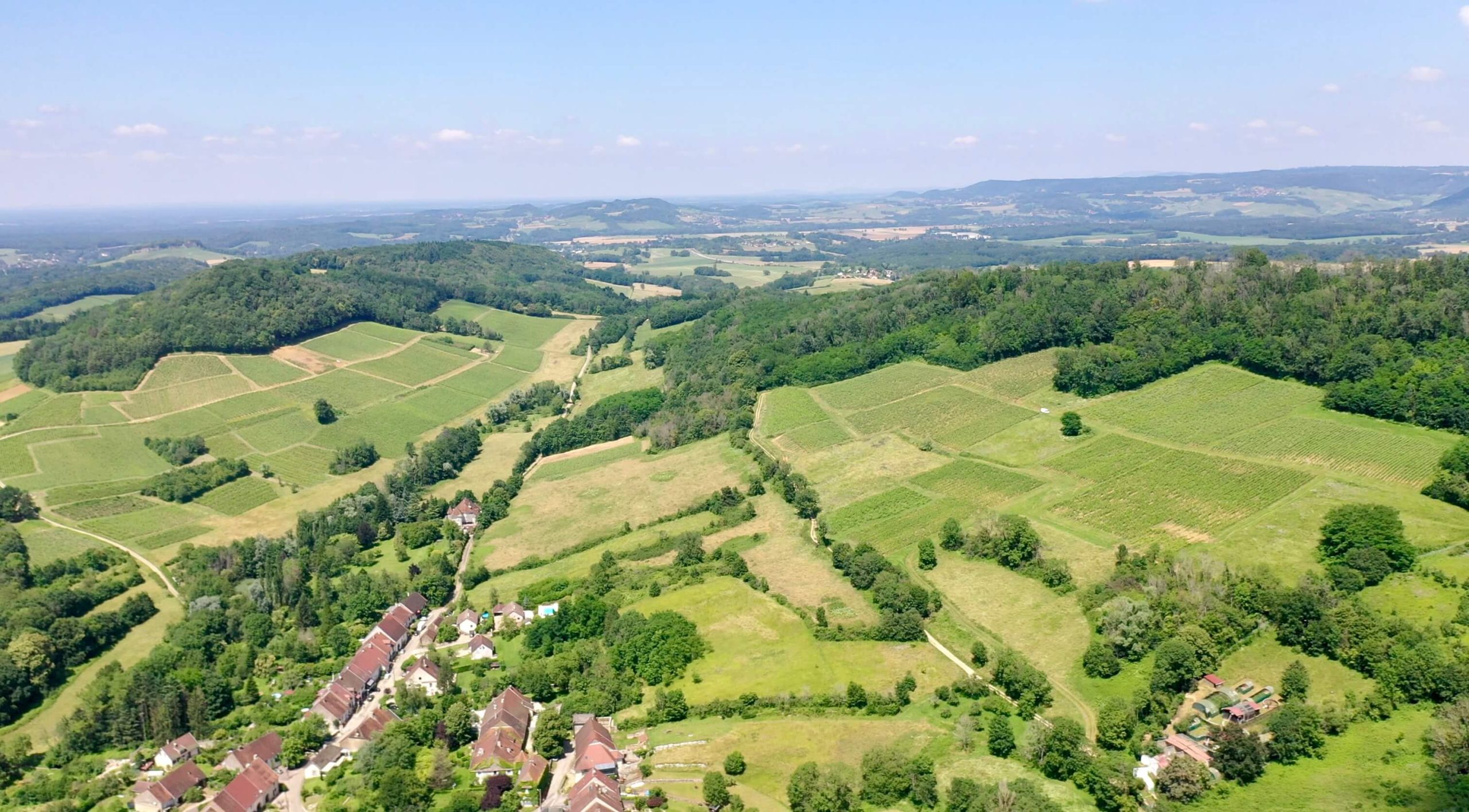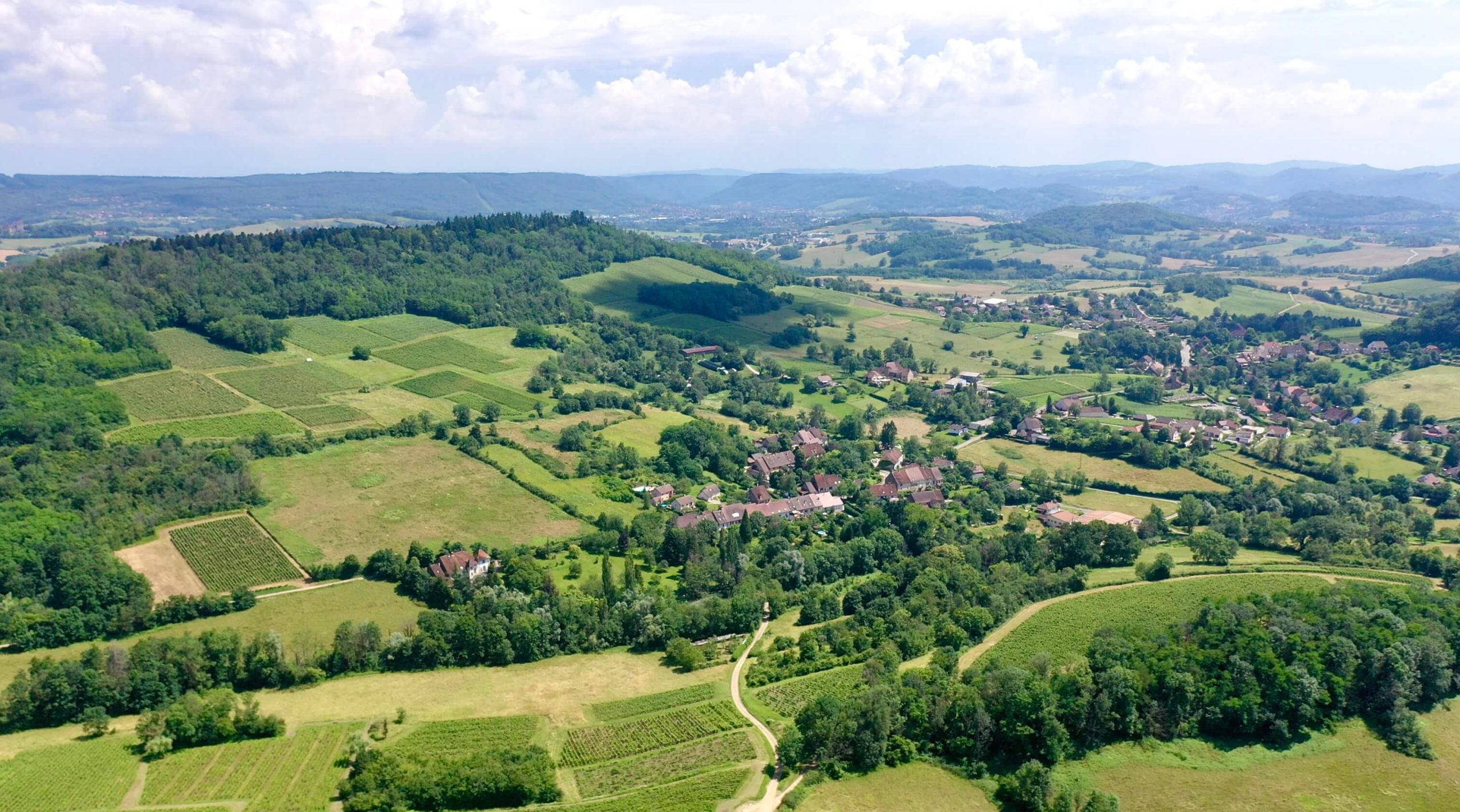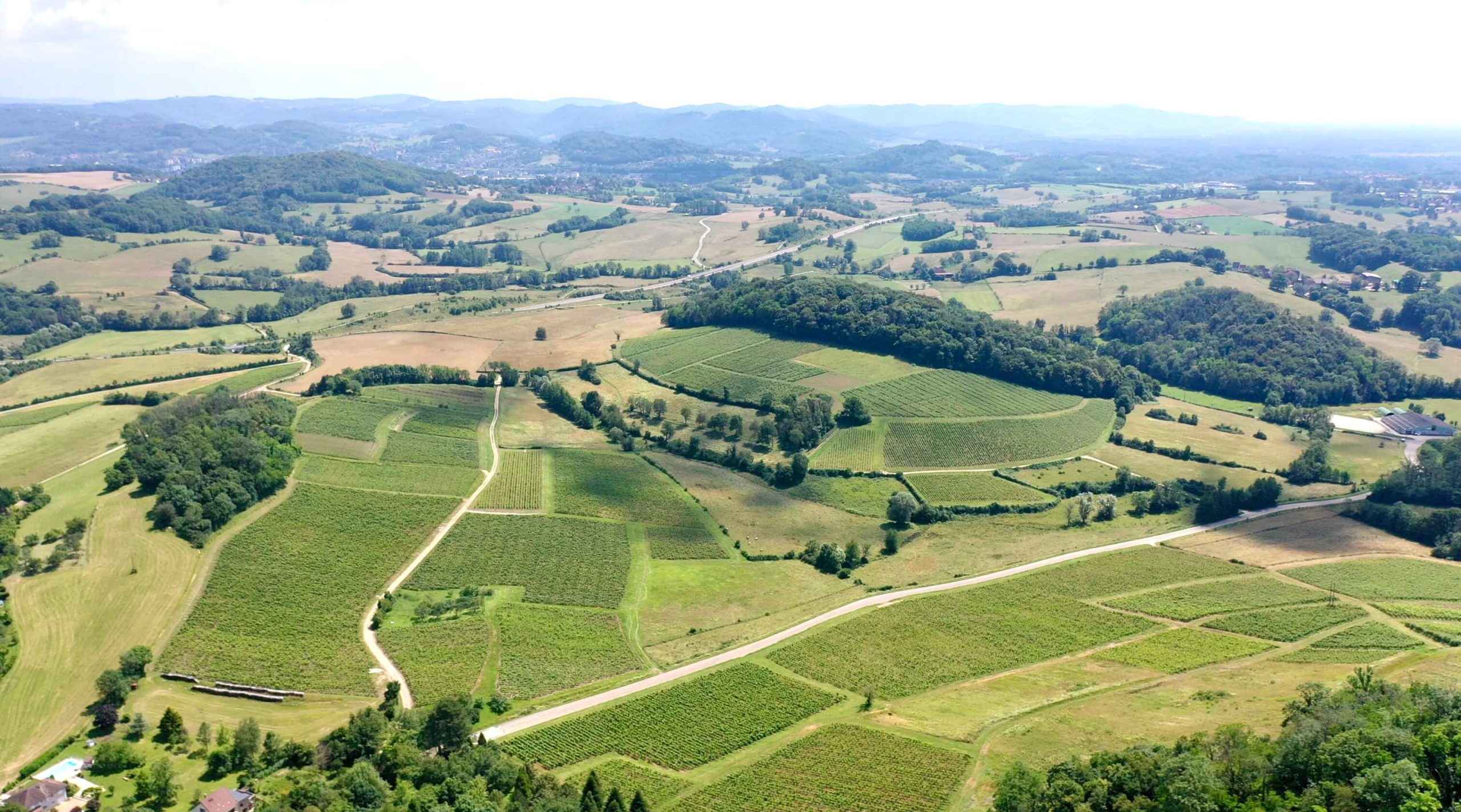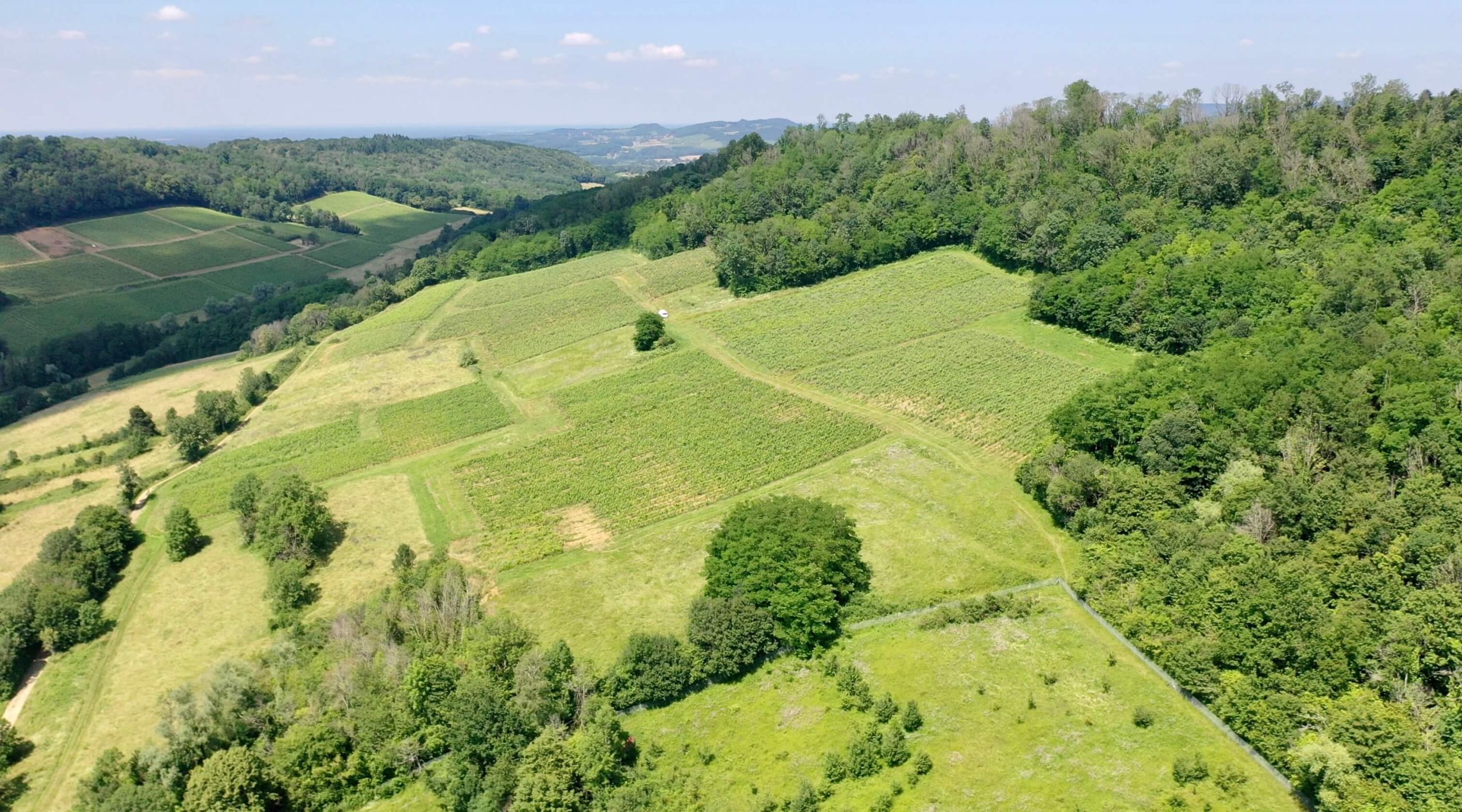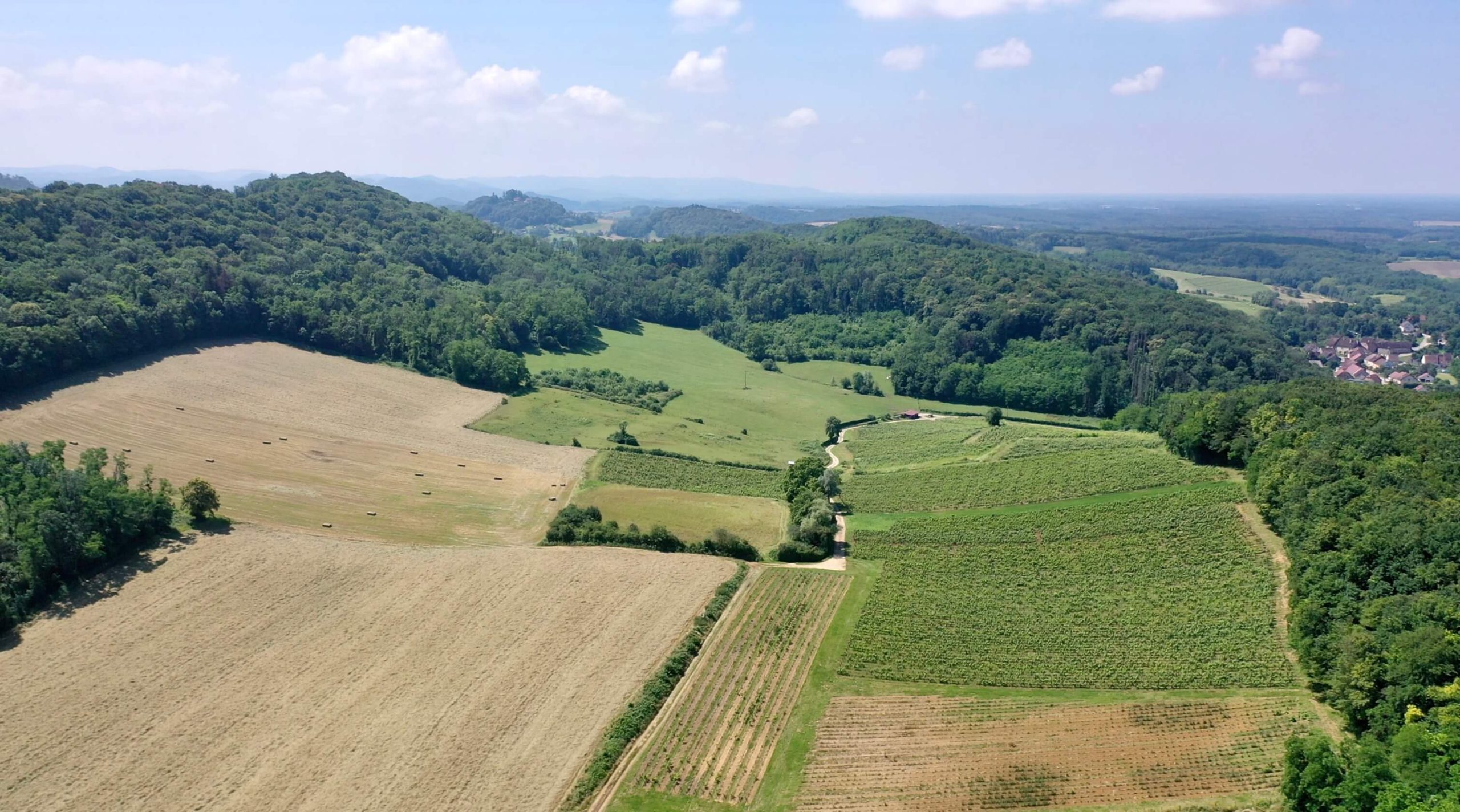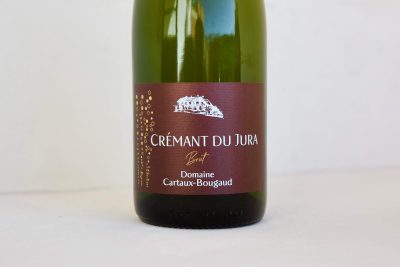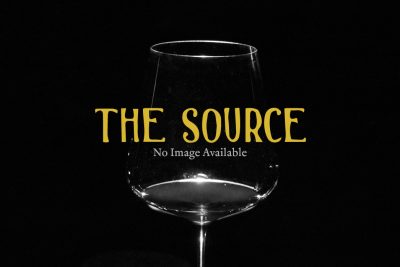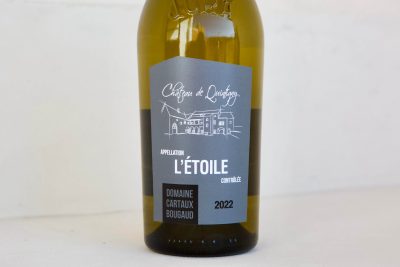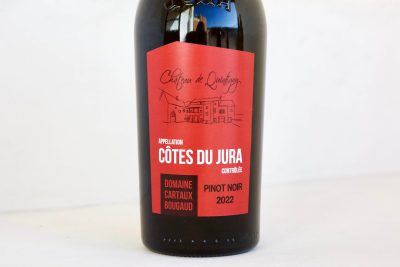Cartaux-Bougaud
This website contains no AI-generated text or images.
All writing and photography are original works by Ted Vance.
Short Summary
Sébastien and Sandrine’s family domaine is relatively young. The family’s first harvest in 1973 on a small 0.20-hectare plot in L’Étoile, their parents, Anne-Marie Bougaud and Guy Cartaux, acquired the Château de Quintigny (whose name adorns most of the labels as well as their family name) in 1983, expanding their vineyards and fully committing to winegrowing. Sébastien Cartaux and his sister Nathalie (who left the domaine in 2010) took over in 1993, and today Sébastien and Sandrine continue to run their 20-hectare estate, which was organic-certified in 2022. They produce Chardonnay (which makes up the vast majority of the vine surface area of L’Étoile’s 67 hectares) and Savagnin from AOC L’Étoile, as well as reds (Poulsard, Trousseau, and Pinot Noir) from the Côtes du Jura. Their wines are crafted in numerous cellars, including the ancient Château de Quintigny, using both traditional “ouillage” method with air space left in the barrel and the region’s unique oxidative aging process, essential for producing the renowned Vin Jaune.Full Length Story
We are always looking to work more with enjoyable partners as much as talented ones. With Sébastien Cartaux and his wife, Sandrine, we have found both. And the mind behind the wines, Sébastien is equally serious about his craft as he is genuinely joyful and generous.
The first samples sent from the domaine included mostly their entry-level white wines and their Pinot Noir. From the first tastes, it was a no-brainer. The whites were classically styled without an extensive amount of funk to get us thinking about how they’d be received, and the Pinot Noir was just perfect: simple, clean, bright and fun with just the right amount of trim and architecture imposed by the terroir. A visit this June confirmed our enthusiasm and we expanded our selection to include their Vin Jaune and their lovely, bright-fruited Trousseau and Poulsard.
We made a tour through their vineyards in l’Etoile, Quintigny, Ruffey-sur-Seille and Arlay with a little droning, a little photography, lots of smiles and lots of tasting and a nice lunch where they treated us with a rare (and correctly priced) and inspiring bottle Nicolas Jacob Gamay, ‘PG’ to taste along with their Poulsard. While Jura is loaded with tiny domaines that everyone wants and few can have, like Jacob, and a few dozen others, there are ‘working horse’ Jura wines that carry just as strong a sense of place rather than an association with the producer. Sébastien’s are more related to the former and are not yet, and may never be, in that cult-of-personality line because that just doesn’t seem to be Sébastien’s way, nor interest. He’s determined to carry on a traditional style with their reds to preserve the naturally fresh and bright fruit-led aromatics with rusticity in the background, while their whites a core of acidity and firm structure led by the aromas, flavors and textures from the ancient noble practice of sous voile (under a veil) aging that highlight austerity and the floral bouquet of Savagnin and, particularly from Chardonnay from these parts.
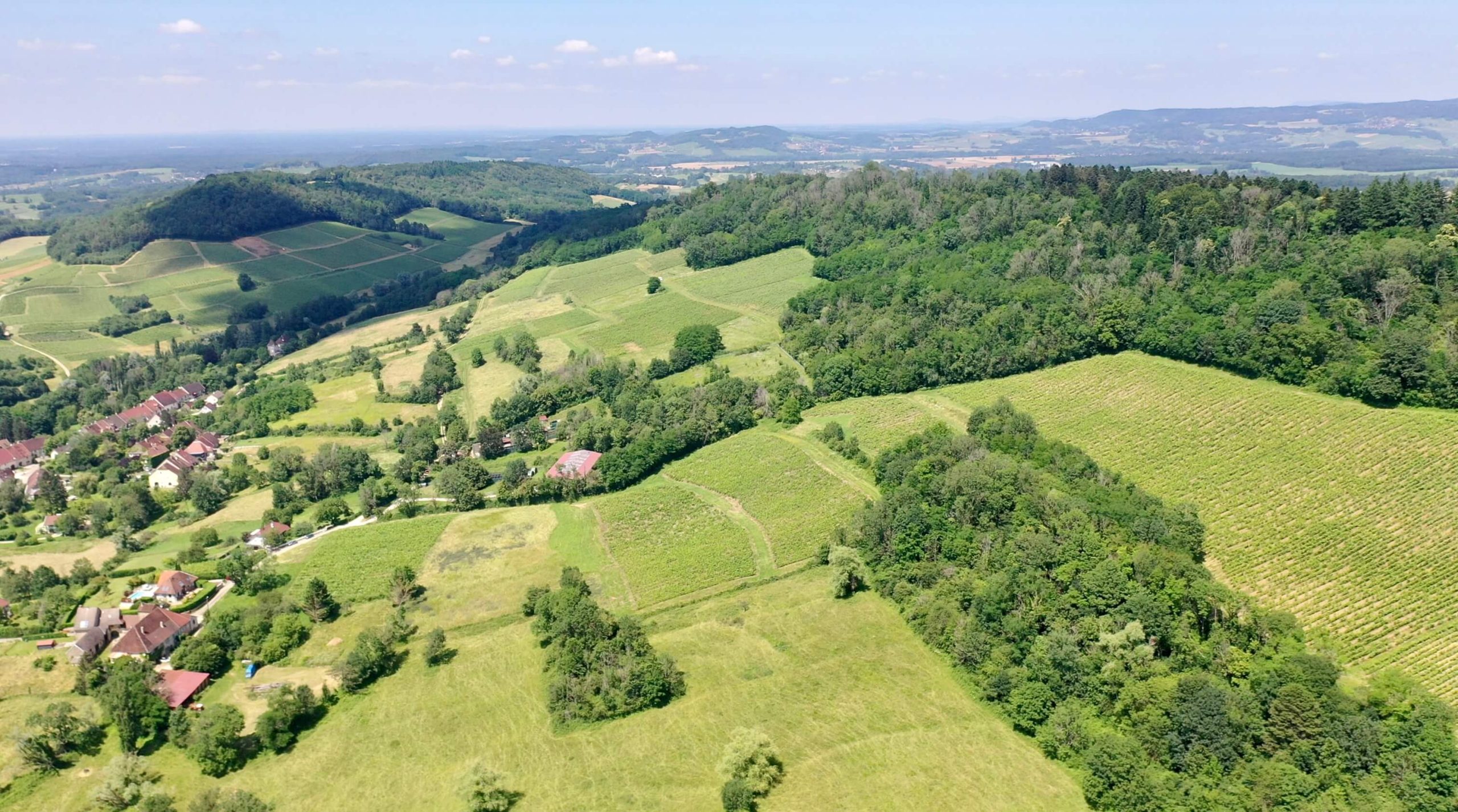
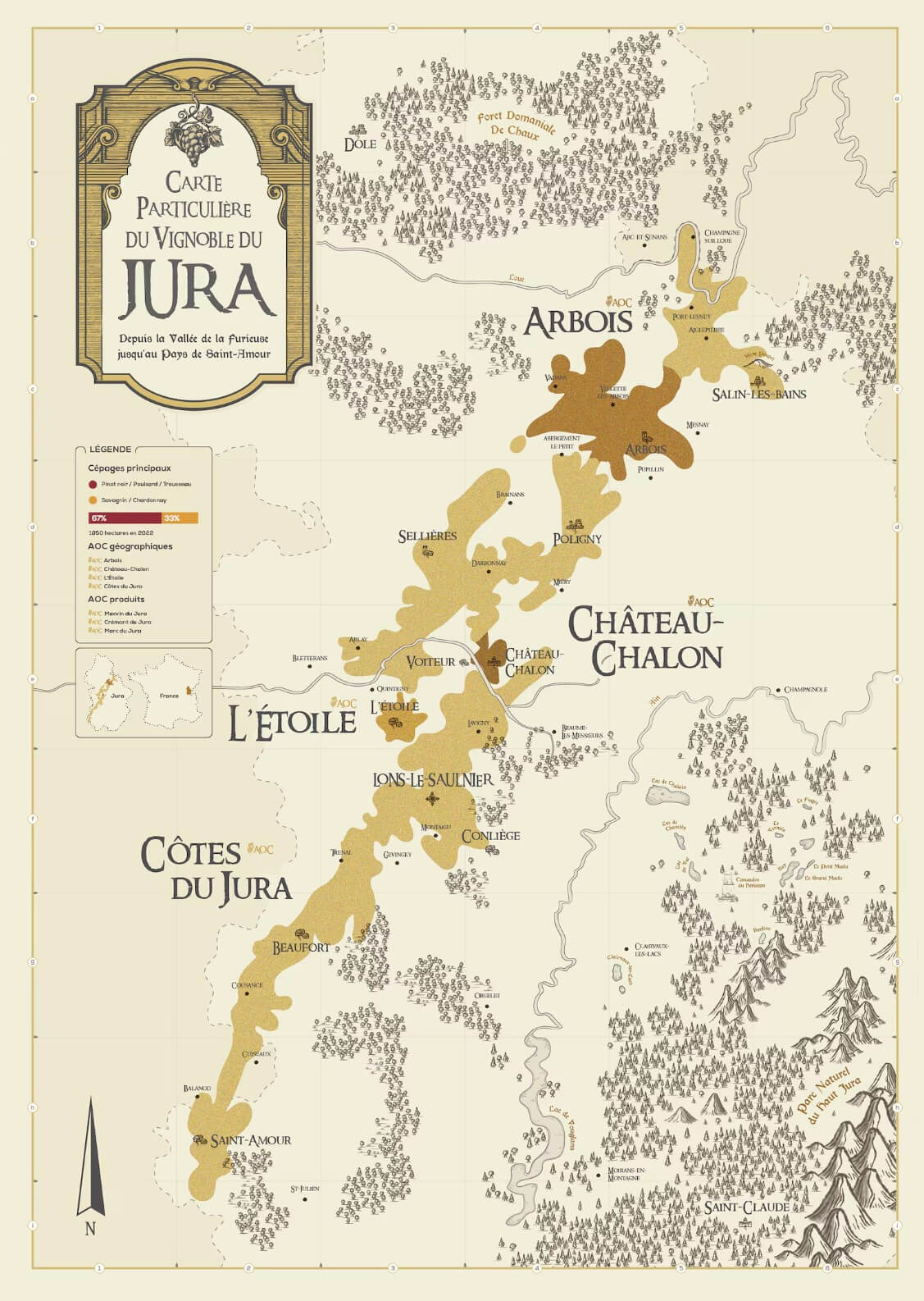
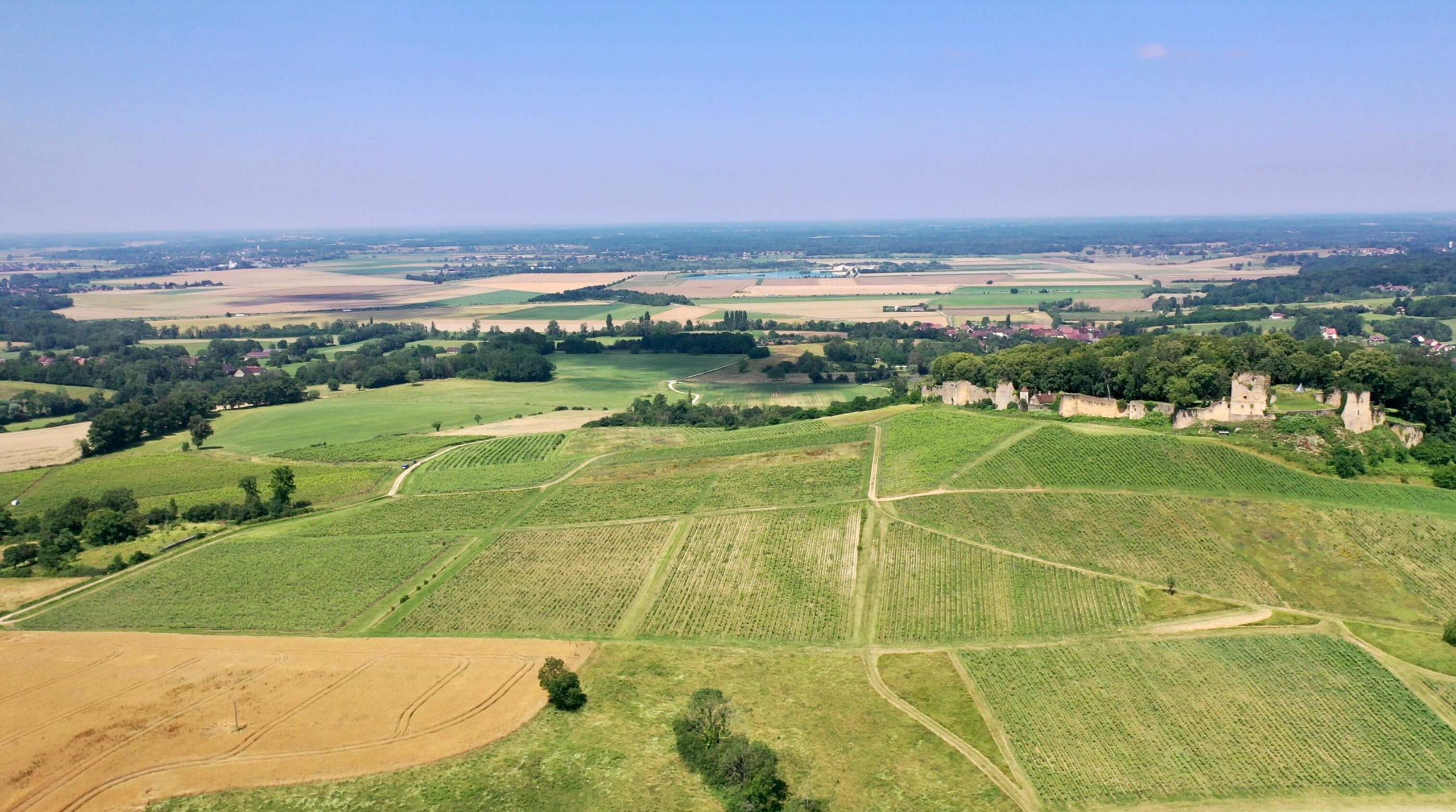
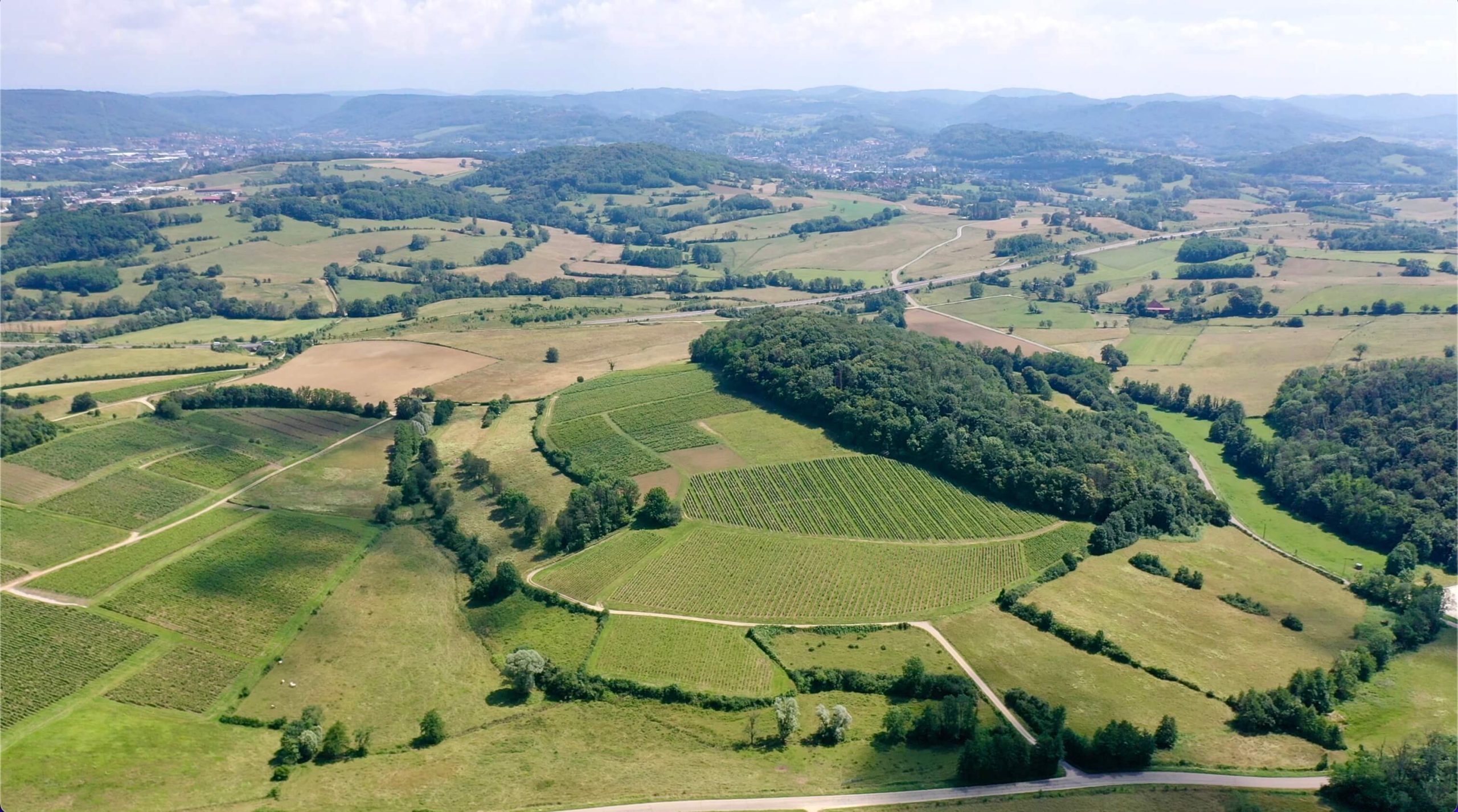

The Jura is a classic combination of continental and mountain climates, which means cold winters and potentially very hot summers balanced with cooler nights, thanks to the nearby Alps. Here, the diversity of the grape varieties makes for harvests that spread out over the season, with Pinot Noir typically ripening early and Savagnin picked later to achieve greater maturity.
Geologically, the region relates mostly to the Jurassic era, like the Chardonnay and Pinot Noir areas of Burgundy. Though here in Jura there is a lot more friable/fragile limestone marl that decomposes rapidly and holds water well, making for deep root penetration into the bedrock and offers some resistance against what can be very hot and dry summers. Also, l’Étoile gets its name from the Lucky Charms-sized star-shaped (étoile) pentacrine fossils formed from the stems of ancient sea lilies.
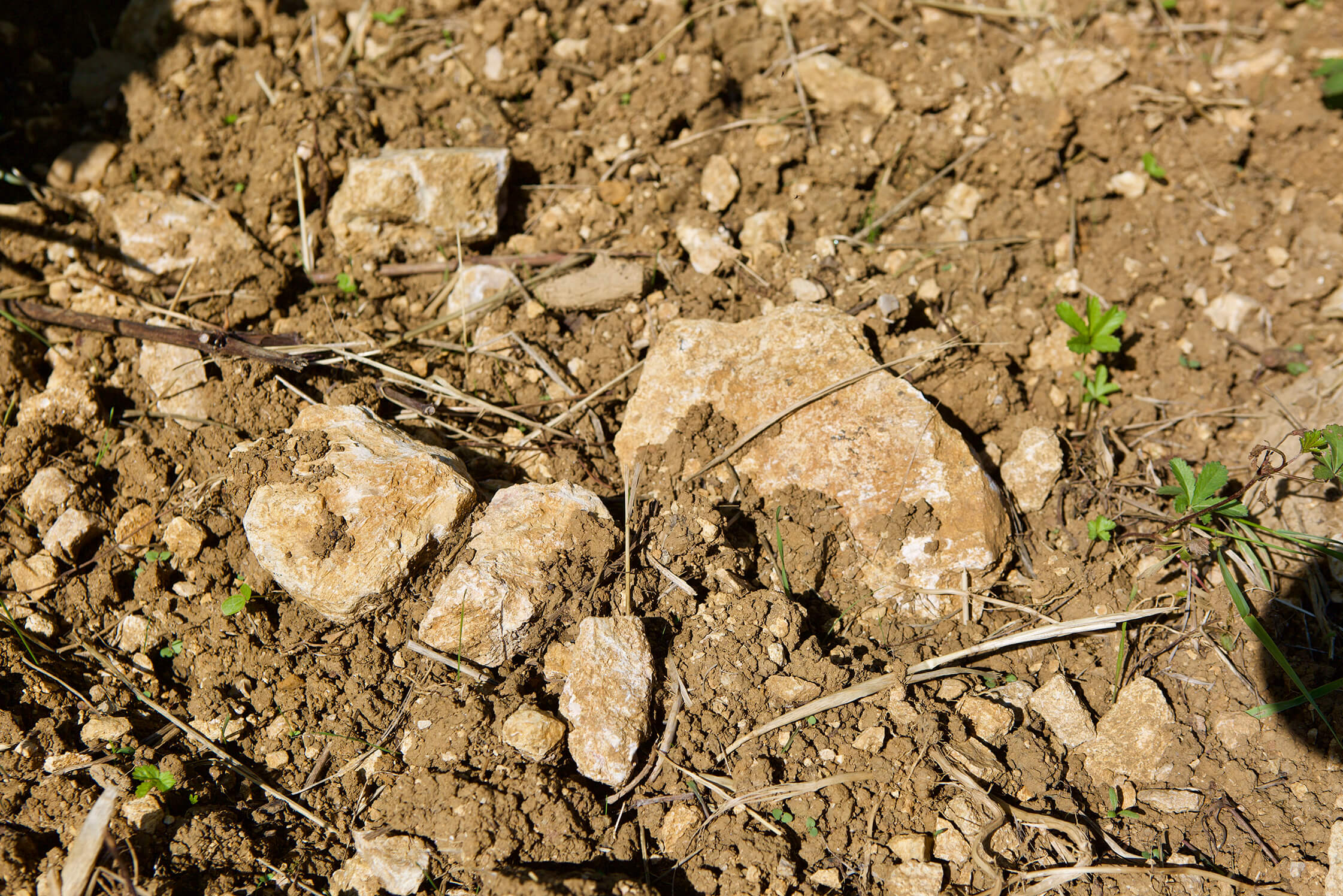

The white wines are a mix of different approaches but are always made in a more classical and direct way with a simple cellar approach. All Chardonnay and Savagnin wines go through natural fermentations with higher maximum temperatures of around 25° C to reduce the fruitier characteristics–further encouraged by lower temperatures–to focus on the secondary and tertiary notes from the start of their potentially long lives. There are differences in aging vessels with both steel, enameled concrete vats and ancient 228-liter French oak. All whites undergo filtration and are fined (except the Vin Jaune) and they all get their first small sulfite dose added to the must before primary fermentation and then again after malolactic.
The reds are as equally direct as the whites and tend to be focused on more upfront fruit qualities but fermented at a maximum of 33° C, which curbs their overtly fruity potential, imparting, again, more savory notes alongside the lifted fruit and flower aromas. Natural fermentations are the objective but are sometimes stubborn enough to warrant assistance. Each variety spends its élevage in different vat types and for different lengths of time, between six and 12 months.
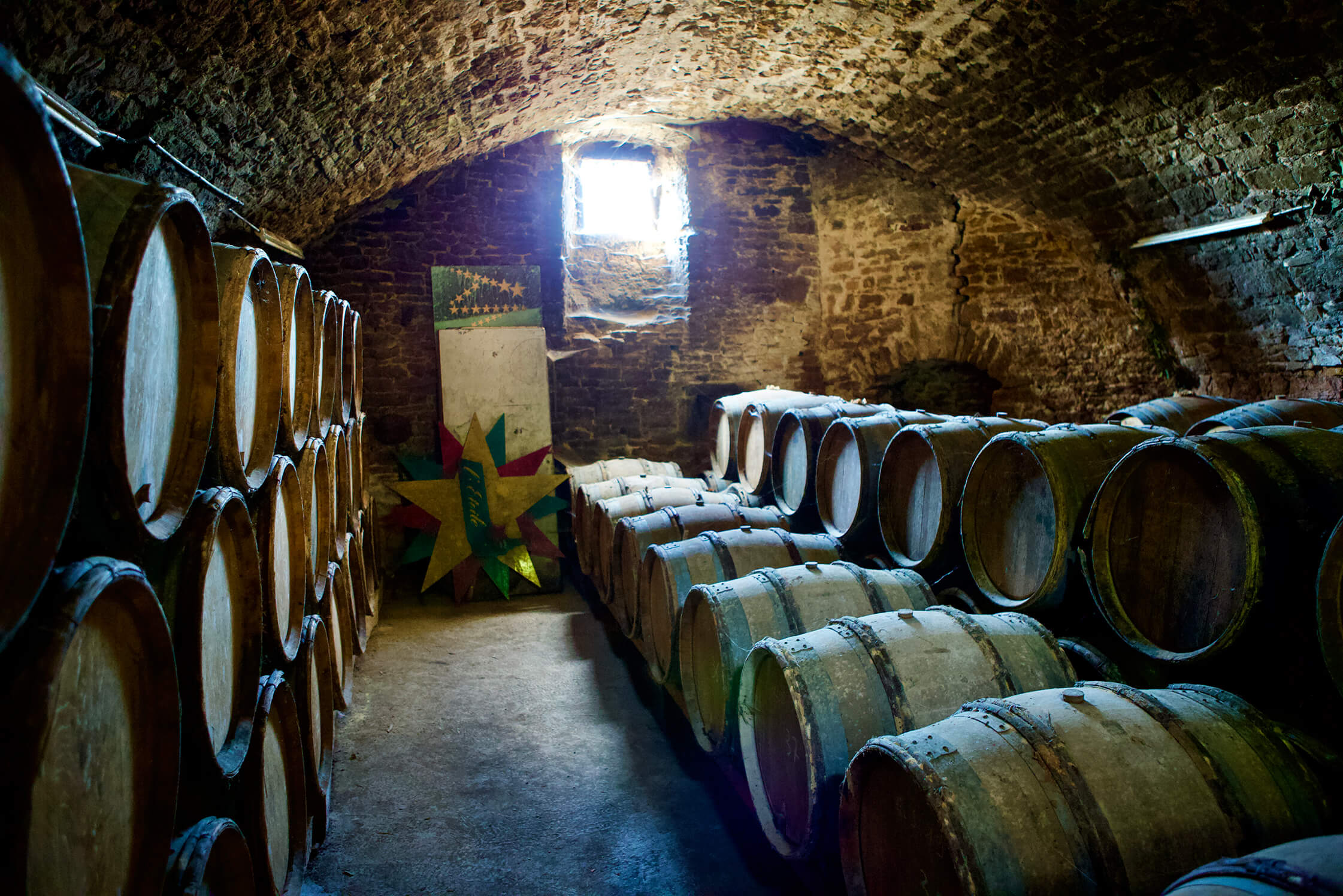
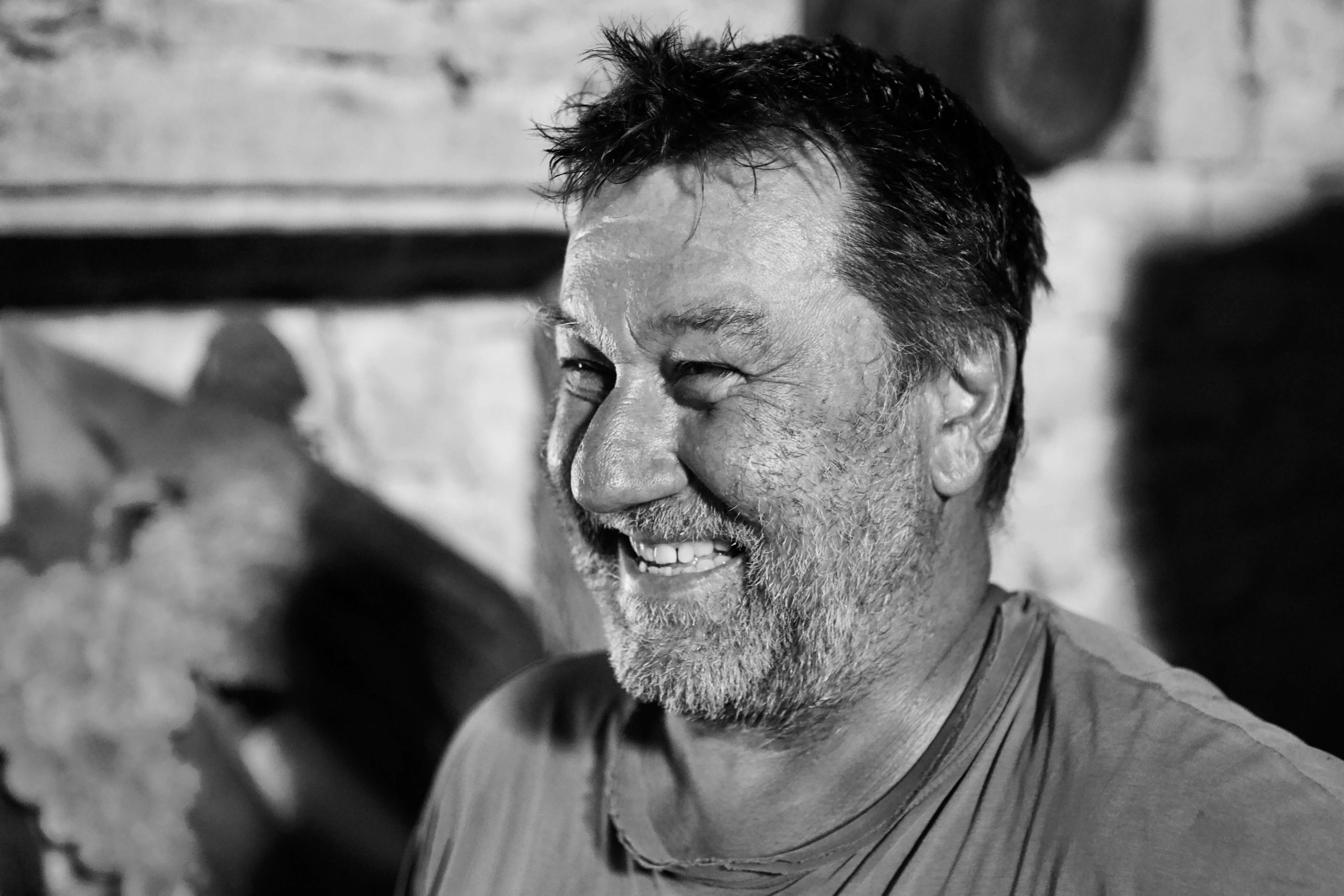

The vineyards of Cartaux-Bougaud are planted on gentle to relatively steep limestone rock and marl sites with variations of clay, sand and silt topsoil mostly derived from the underlying bedrock, and sit between 250 and 300 meters of altitude.
Sébastien makes a few different bottlings of bubbles, but it happens that the one that strikes us the most is the starter in the range. It’s perfect for a grape like Chardonnay that only needs a good terroir to channel its minerally message in a simple and straightforward way. Like any bubbles intended to be easy to quaff without too much hubbub, the Crémant de Jura Brut (no dosage) comes from younger vines of about 15 years old (2024) planted on a south face at 250 meters altitude on gentle slopes.
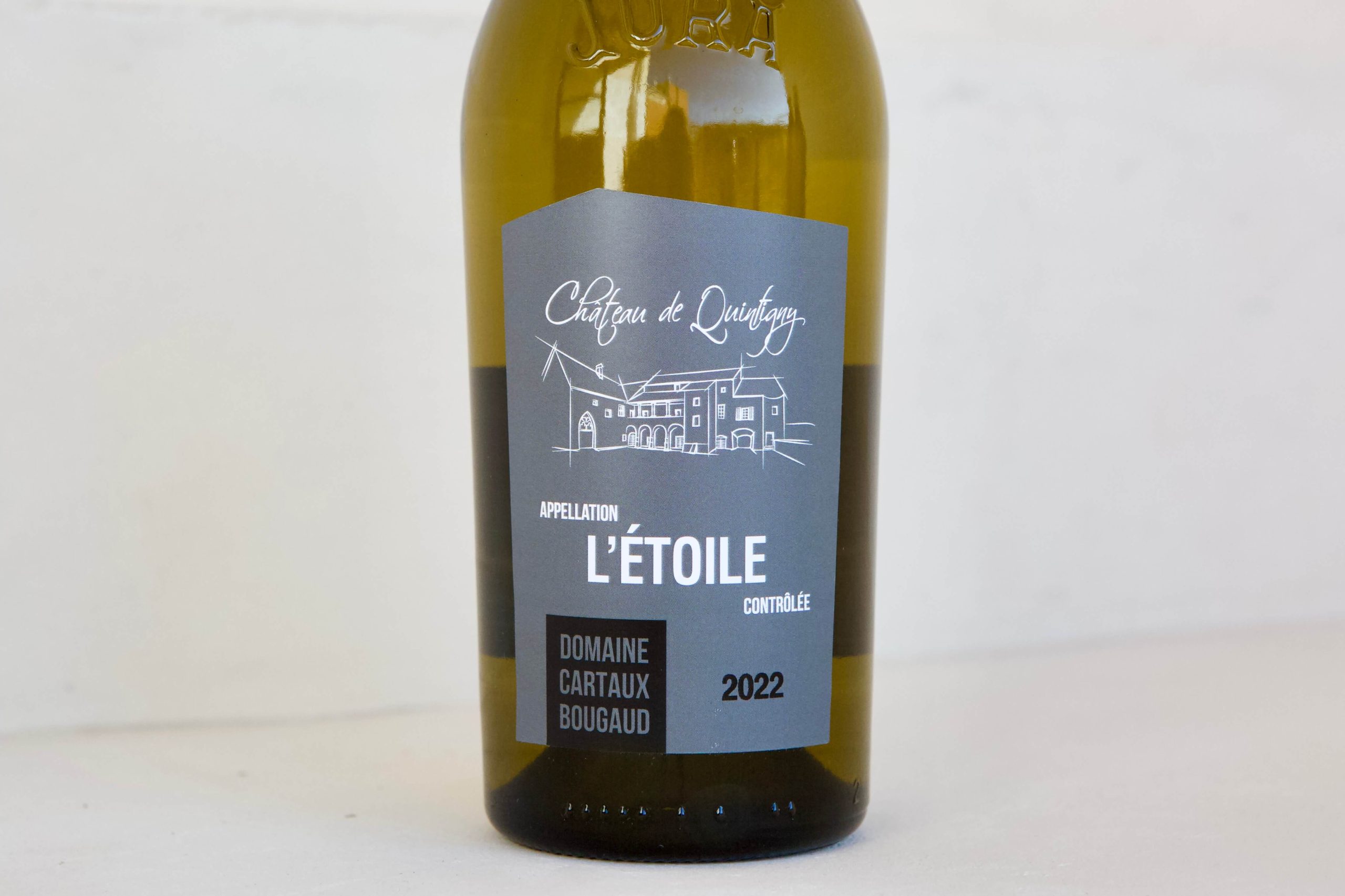
Their sturdy line of Chadonnays, their appellation L’Étoile Chardonnay and L’Étoile Chardonnay ‘La Côte des Vents’ are both on an average of around 280 meters but La Côte des Vents (“the slope of winds”) comes from vines planted in 1973 on a steeper slope where the other Chardonnay is on a gentler slope with vines planted in 1983 on deeper topsoil. Consequently, the L’Étoile Chardonnay is aged under flor for 12-18 months in barrel (perhaps to round out the shoulders the deep clay topsoil seems to impart), while La Côte des Vents spends its life entirely in more inert vessels (steel and concrete) for a year to build on its finely etched lines.
Vin Jaune is an obsession for some, and one of France’s historical vinous triumphs. There are those that are ready when young with a richer, energetic profile in their youth, and those much more stoic, seeming to be born serious and built for the longest haul. So far, Sébastien’s interpretation seems to land solidly in the stoic lane, which would be unexpected once around this always jovial maker. It might be better suited for a private collector with many years ahead of them (or for their children!). However, paired by the sommelier with the right food, like its famously perfect match, Comté, it will definitely inspire the drinker to crack a smile. We might even suggest the similarly styled but higher acid, well-aged Beaufort to force a bigger grin from Sébastien’s rendition. Their Savagnin grapes for this most historic wine of France comes from vines planted in 1993 on a west face at 280-300 meters on a steep slope of limestone marl bedrock and rich clay topsoil.
The three Côtes du Jura reds hit their varietal marks with clarity. All come from gentler slopes that range from 250 to 280 meters of altitude–typical for the top Côte d’Or wines across the Saône Valley toward the west. The Pinot Noir comes from vines planted in 2006 on an east-west face, the Poulsard from two plots planted in 1993 and 2015 with east and west faces, and the Trousseau also comes from vines planted in 2006 on a south face at 280 meters. These are classic and even slightly dainty red wines with only the slightest hint of Jura funk. After a couple weeks on the skins without stems, the Pinot Noir is raised in 2/3 concrete and 1/3 old 228 L French oak for ten months prior to bottling, while the Poulsard and Trousseau are aged half a year in concrete before bottling.



